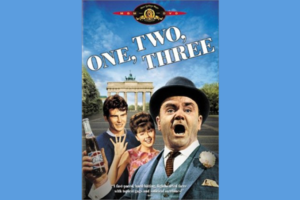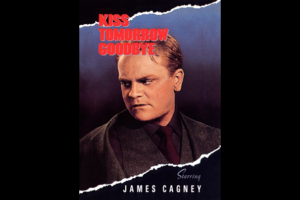The word great is thrown around a lot, but with this guy, it’s true. James Cagney was a real tough guy and a song and dance man as well. James Cagney, of course, was born in New York City in 1899. After high school, he attended Columbia University but left school upon his father’s death in the 1918 flu pandemic.
James Cagney had a variety of jobs bellhop and night doorman. He learned to tap dance, was a street brawler, and was a good amateur boxer. His mother encouraged his boxing but refused to let him turn pro.
James Cagney, who began working behind the scenes in theater, was called one night to replace his sick brother and thus began his acting career. He began working on Broadway and in Vaudeville. In 1924, he and his wife moved to California. But they had no luck and headed back to New York.
James Cagney was in a play titled “Maggie the Magnificent” with actress Joan Blondell. Al Jolson brought the right for filming but insisted that Cagney and Blondell be given their roles. The film came out under the title Sinner’s Holiday (1930) and resulted in Cagney signing a seven-year contract with Warner Brothers. Cagney made four more movies before his breakout role, in The Public Enemy (1931), a classic gangster film. The studio continued this theme by casting Cagney with Edward G. Robinson in G Men (1934).
A champion of actor equity he was involved in the formation of the Screen Actors Guild in 1933. In Footlight Parade (1933) Cagney was able to show his substantial dancing ability. In Here Comes the Navy (1934), he met his lifelong friend Pat O’Brien. This movie is fascinating as it was partially shot on the USS Arizona and shows some great views of this iconic ship.
Cagney was involved in fierce contract negotiations during his entire time a Warner Brothers. In 1936, he began making independent films, but most were nothing to speak about. Cagney eventually won his lawsuit and returned to Warner’s.
Now back at Warner’s James Cagney began to make movies of different genres. But back in the gangster role in Angels with Dirty Faces (1938) he played Rocky Sullivan a condemned criminal that a friendly priest begs him to “turn yellow” before his execution so young boys won’t idolize the lawbreaker.
Cagney was accused of being a communist sympathizer in 1934 and in 1940. Cagney was cleared by U.S. Representative Martin Dies, Jr., on the House Un-American Activities Committee (HUAC).
Cagney’s last gangster role for a time was The Roaring Twenties (1939) with Humphrey Bogart. In December 1941, Cagney began working on Yankee Doodle Dandy (1942) playing the lead role and song and dance man George M. Cohan. Cagney received the best actor Oscar for this film.
In 1942, Cagney formed an independent studio through United Artists. That same year he was elected president of SAG. He continued to raise money for the war and perform in USO shows. Following a series of poor-performing movies, Cagney returned to Warner Brothers.
Right off the bat, James Cagney turned in one of his most memorable roles in White Heat (1949). He made other films but the next one of importance to me is Mister Roberts (1955). This film was directed by John Ford.
In 1955, Cagney was cast on the Western film Tribute to a Bad Man for MGM. They offered him These Wilder Years (1956) with Barbara Stanwyck. In 1956, Cagney played Lon Chaney Sr. in Man of a Thousand Faces (1957). Later in 1957, Cagney tried directing but did not care for the work.
Another film from this later time was Shake Hands with the Devil (1959) where Cagney played an Irish Republican Army commander. In 1960, James Cagney took on the role of Admiral William F. “Bull” Halsey in The Gallant Hours (1960), the story of the Guadalcanal Campaign in the Pacific Theater of World War II.
Of course, in his next to the last movie, Cagney showed what a masterful talent he was with the comedy caper One, Two, Three (1961).
James Cagney retired in 1961, turning down roles in My Fair Lady (1964) and the Godfather (1972). Suffer from poor eyesight due to diabetes, Cagney rarely appeared in public. In 1974, Cagney appeared at the American Film Institute’s Life Achievement Award. Charlton Heston said of Cagney that he was “…one of the most significant figures of a generation when American film was dominant, Cagney, that most American of actors, somehow communicated eloquently to audiences all over the world …and to actors as well.” In his acceptance speech, Cagney said to impressionist Frank Gorshin, “Oh, Frankie, just in passing, I never said ‘MMMMmmmm, you dirty rat!’ What I actually did say was ‘Judy, Judy, Judy!'” This was a joking reference to an oft attributed misquotation of Cary Grant.
Following a stroke and being unable to pursue his hobbies, Cagney was encouraged by his wife and Zimmerman his caregiver to take a role. This role turned out to be a small but very important role in Ragtime (1981).
James Cagney died at his farm in Stanfordville, New York in 1986, of a heart attack. He was 86 years old.
One of my favorite Cagney quotes on the subject of hard times and work is “It was good for me. I feel sorry for the kid who has too cushy a time of it. Suddenly he has to come face-to-face with the realities of life without any mama or papa to do his thinking for him.”
Filmography
1930 Sinners’ Holiday Harry Delano Film debut
1930 The Doorway to Hell Steve Mileaway
1931 Blonde Crazy Bert Harris
1931 Smart Money Jack
1931 The Millionaire Schofield, Insurance Salesman
1931 The Public Enemy Tom Powers
1931 Other Men’s Women Ed “Eddie” Bailey
1932 Winner Take All Jim “Jimmy” Kane
1932 The Crowd Roars Joe Greer
1932 Taxi! Matt Nolan
1933 Lady Killer Dan Quigley
1933 Footlight Parade Chester Kent
1933 The Mayor of Hell Richard “Patsy” Gargan
1933 Picture Snatcher Danny Kean
1933 Hard to Handle Myron C. “Lefty” Merrill
1934 The St. Louis Kid Eddie Kennedy
1934 Here Comes the Navy Chester “Chesty” J. O’Conner
1934 He Was Her Man Flicker Hayes, a.k.a. Jerry Allen
1934 Jimmy the Gent “Jimmy” Corrigan
1935 Mutiny on the Bounty Extra uncredited
1935 A Midsummer Night’s Dream Nick Bottom
1935 The Irish in Us Danny O’Hara
1935 G Men “Brick” Davis
1935 Devil Dogs of the Air Thomas Jefferson “Tommy” O’Toole
1935 Frisco Kid Bat Morgan
1936 Great Guy Johnny “Red” Cave
1936 Ceiling Zero Dizzy Davis
1937 Something to Sing About Terrence “Terry” Rooney stage name of Thadeus McGillicuddy
1938 Angels with Dirty Faces Rocky Sullivan Nominated – Academy Award for Best Actor
1938 Boy Meets Girl Robert Law
1939 The Roaring Twenties Eddie Bartlett
1939 Each Dawn I Die Frank Ross
1939 The Oklahoma Kid Jim Kincaid
1940 City for Conquest Danny Kenny (Young Samson)
1940 Torrid Zone Nick “Nicky” Butler
1940 The Fighting 69th Jerry Plunkett
1941 The Bride Came C.O.D. Steve Collins
1941 The Strawberry Blonde T. L. “Biff” Grimes
1942 Yankee Doodle Dandy George M. Cohan Academy Award for Best Actor
1942 Captains of the Clouds Brian MacLean
1943 Johnny Come Lately Tom Richards
1943 You, John Jones! John Jones short subject
1945 Blood on the Sun Nick Condon
1947 13 Rue Madeleine Robert Emmett “Bob” Sharkey a.k.a. Gabriel Chavat
1948 The Time of Your Life Joseph T.
1949 White Heat Arthur “Cody” Jarrett
1950 The West Point Story Elwin “Bix” Bixby
Kiss Tomorrow Goodbye (1950) – Ralph Cotter
1951 Come Fill the Cup Lew Marsh
1952 What Price Glory? Capt. Flagg
1953 A Lion Is in the Streets Hank Martin
1955 Mister Roberts Capt. Morton
1955 The Seven Little Foys George M. Cohan
1955 Love Me or Leave Me Martin Snyder Nominated – Academy Award for Best Actor
1955 Run for Cover Matt Dow
1956 These Wilder Years Steve Bradford
1956 Tribute to a Bad Man Jeremy Rodock
1957 Man of a Thousand Faces Lon Chaney
1959 Shake Hands with the Devil Sean Lenihan
1959 Never Steal Anything Small Jake MacIllaney
1960 The Gallant Hours William F. Halsey, Jr. also the Producer
One, Two, Three (1961) C.R. MacNamara
1981 Ragtime Commissioner Rhinelander Waldo










Leave a Reply
Your email is safe with us.